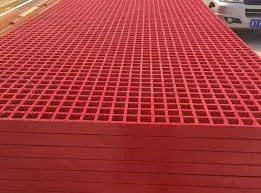
-
 Afrikaans
Afrikaans -
 Albanian
Albanian -
 Amharic
Amharic -
 Arabic
Arabic -
 Armenian
Armenian -
 Azerbaijani
Azerbaijani -
 Basque
Basque -
 Belarusian
Belarusian -
 Bengali
Bengali -
 Bosnian
Bosnian -
 Bulgarian
Bulgarian -
 Catalan
Catalan -
 Cebuano
Cebuano -
 China
China -
 China (Taiwan)
China (Taiwan) -
 Corsican
Corsican -
 Croatian
Croatian -
 Czech
Czech -
 Danish
Danish -
 Dutch
Dutch -
 English
English -
 Esperanto
Esperanto -
 Estonian
Estonian -
 Finnish
Finnish -
 French
French -
 Frisian
Frisian -
 Galician
Galician -
 Georgian
Georgian -
 German
German -
 Greek
Greek -
 Gujarati
Gujarati -
 Haitian Creole
Haitian Creole -
 hausa
hausa -
 hawaiian
hawaiian -
 Hebrew
Hebrew -
 Hindi
Hindi -
 Miao
Miao -
 Hungarian
Hungarian -
 Icelandic
Icelandic -
 igbo
igbo -
 Indonesian
Indonesian -
 irish
irish -
 Italian
Italian -
 Japanese
Japanese -
 Javanese
Javanese -
 Kannada
Kannada -
 kazakh
kazakh -
 Khmer
Khmer -
 Rwandese
Rwandese -
 Korean
Korean -
 Kurdish
Kurdish -
 Kyrgyz
Kyrgyz -
 Lao
Lao -
 Latin
Latin -
 Latvian
Latvian -
 Lithuanian
Lithuanian -
 Luxembourgish
Luxembourgish -
 Macedonian
Macedonian -
 Malgashi
Malgashi -
 Malay
Malay -
 Malayalam
Malayalam -
 Maltese
Maltese -
 Maori
Maori -
 Marathi
Marathi -
 Mongolian
Mongolian -
 Myanmar
Myanmar -
 Nepali
Nepali -
 Norwegian
Norwegian -
 Norwegian
Norwegian -
 Occitan
Occitan -
 Pashto
Pashto -
 Persian
Persian -
 Polish
Polish -
 Portuguese
Portuguese -
 Punjabi
Punjabi -
 Romanian
Romanian -
 Russian
Russian -
 Samoan
Samoan -
 Scottish Gaelic
Scottish Gaelic -
 Serbian
Serbian -
 Sesotho
Sesotho -
 Shona
Shona -
 Sindhi
Sindhi -
 Sinhala
Sinhala -
 Slovak
Slovak -
 Slovenian
Slovenian -
 Somali
Somali -
 Spanish
Spanish -
 Sundanese
Sundanese -
 Swahili
Swahili -
 Swedish
Swedish -
 Tagalog
Tagalog -
 Tajik
Tajik -
 Tamil
Tamil -
 Tatar
Tatar -
 Telugu
Telugu -
 Thai
Thai -
 Turkish
Turkish -
 Turkmen
Turkmen -
 Ukrainian
Ukrainian -
 Urdu
Urdu -
 Uighur
Uighur -
 Uzbek
Uzbek -
 Vietnamese
Vietnamese -
 Welsh
Welsh -
 Bantu
Bantu -
 Yiddish
Yiddish -
 Yoruba
Yoruba -
 Zulu
Zulu
grp damper
Understanding GRP Dampers A Key Component in Structural Engineering
Glass Reinforced Plastic (GRP) dampers have emerged as an essential tool in modern structural engineering, particularly in seismic applications. This innovative technology combines the benefits of lightweight materials with exceptional strength, making it ideal for enhancing the resilience of structures against dynamic loads, such as earthquakes and wind forces.
Understanding GRP Dampers A Key Component in Structural Engineering
One of the primary advantages of GRP dampers is their ability to absorb vibrations and oscillations. When a building experiences seismic activity, the GRP dampers act as shock absorbers, reducing the amount of energy transferred to the structure. This energy dissipation is crucial in minimizing movement and deformation, which can lead to structural failure. Unlike traditional dampers, GRP dampers do not add significant weight to the building’s framework, allowing for a more efficient design without compromising performance.
grp damper

Additionally, GRP dampers are versatile and can be employed in various applications, including bridges, high-rise buildings, and critical infrastructure facilities. Their adaptability makes them a favored choice among engineers and architects seeking solutions for enhancing the durability and safety of structures in earthquake-prone areas. In particular, when integrated into the design of a building from the outset, these dampers can effectively mitigate the impact of seismic forces, ensuring greater occupant safety and minimizing repair costs post-event.
In terms of installation, GRP dampers are relatively easy to implement. They can be designed to fit seamlessly into new constructions or retrofitted into existing structures. This flexibility is particularly valuable for aged buildings that require modernization to meet current safety standards. As urban areas continue to grow and the demand for resilient infrastructure rises, the role of GRP dampers is likely to become even more significant.
Moreover, the economic aspect of using GRP dampers cannot be overlooked. While the initial investment in these dampers may be higher than traditional solutions, the long-term savings achieved through reduced repair costs and extended lifespan of infrastructure can provide significant financial benefits. This economic rationale, coupled with their efficiency and performance, positions GRP dampers as a wise choice in structural engineering.
In conclusion, GRP dampers represent a significant advancement in the field of structural engineering, particularly in the context of seismic resistance. Their lightweight nature, combined with high energy dissipation capabilities, makes them an optimal solution for enhancing building resilience. As cities continue to face the challenges posed by natural disasters, the adoption of technologies like GRP dampers will be critical in developing safer, stronger, and more durable infrastructures for future generations.









